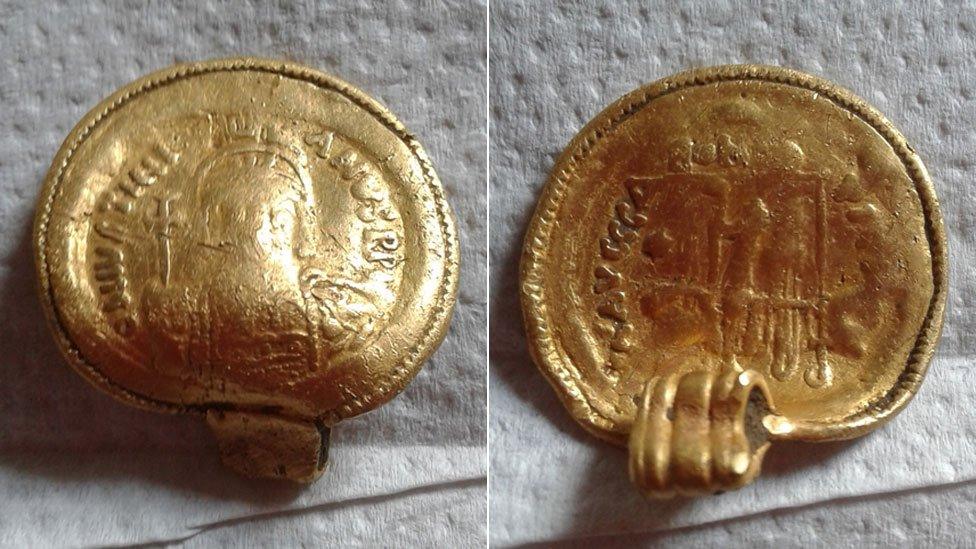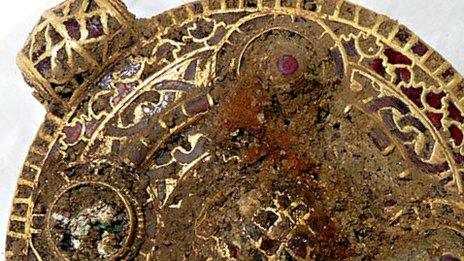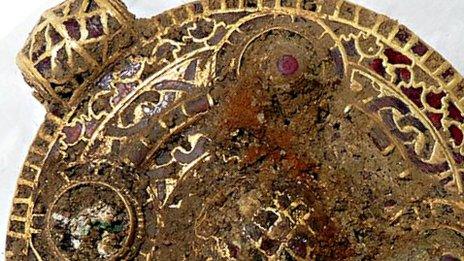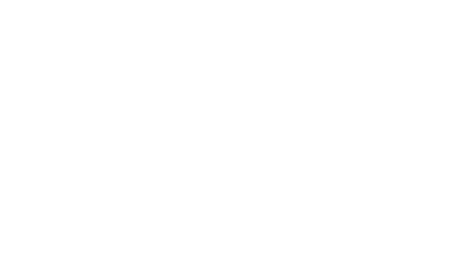Metal detectorist finds rare 6th Century pendant
- Published

The Anglo-Saxon pendant was found in a field near Attleborough on Monday
A rare 6th Century gold pendant featuring images from a Byzantine coin has been found by a metal detectorist more than 1,500 years after being made.
The early Anglo-Saxon pendant is imprinted with an image of Emperor Justinian and is thought to have been made in France.
It was found by Godfrey Pratt in a field near Attleborough, Norfolk.
Mr Pratt said he had made some finds which were of archaeological interest, but this one was "bling".
Mr Pratt, who lives near the town, said: "It appeared to be a golden bottle-top but when I looked closer I found it to be something far more significant.
"I recognised it to be a gold pendant... it's extremely rare.
"Very few have been found in the UK."
Mr Pratt, who has been metal detecting for six years, said he was known at his club as the "king of bling because of the trinkets I bring in," but he had never previously found gold.
He has since informed the Norfolk Historic Environment Record (HER) and the county's museum service about his discovery.

Metal detectorist Godfrey Pratt said he knew the find was interesting when he set eyes on it
Finds officer Adrian Marsden said it was "rare" and made from high-quality gold.
Dr Marsden said the piece of jewellery had possibly gone into the ground in a burial, "probably as a very much-loved pendant."
He said it could indicate there was a cemetery on the field where it was found.
"There could be more stuff out there, time will tell," said Dr Marsden.
Mr Pratt started searching the site with a team from the Norfolk Heritage Recovery Group in Norwich as part of a project approved by the Norfolk HER.
The pendant will go to the coroner and then to the British Museum for valuation.
- Published29 November 2016

- Published27 February 2015

- Published7 August 2013
